Weightlifting
Weightlifting is an Olympic sport in which athletes compete in weight lifting exercises. At present in modern weightlifting, there are two types of such exercises: snatch and the clean and jerk.
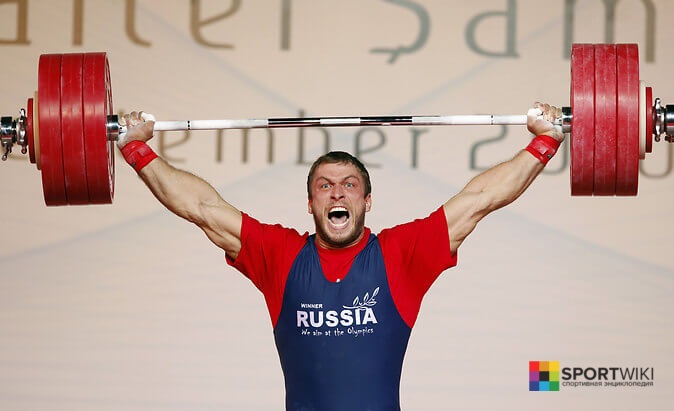
The International Weightlifting Federation (IWF) is the international body engaged in organizing and conducting weightlifting competitions. The headquarters is located in Budapest (Hungary).
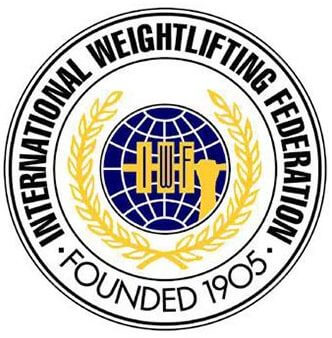
Contents
History of weightlifting
The earliest evidence to weightlifting competitions can be found in the history of ancient Egypt, ancient Greece, and ancient China. The appearance of modern weightlifting owes to strong men who used to perform at circus arenas in Germany, France, England, Holland, Denmark, Italy, and Russia at the end of the 19th century. Their circus play attracted the public interest to athletics.
The development of weightlifting as a sport started in the period from 1860 to 1920. Athletic coteries and clubs began to be organized, various sports equipment for weightlifting was manufactured and improved, and the first rules for the exercises and competitions were formed.
In 1860, the first official competitions were held in the USA, and in 1891 the First International Championship was held in Great Britain. In 1898, the official world championship was held in Vienna.
The weightlifting competitions have been the part of almost all Olympic Games, including the first Olympic Games in 1896 (Athens).
In 1920, the International Weightlifting Federation appeared, which began to supervise the official European and World Championships. In 1928, the pentathlon was replaced by the Olympic triathlon, and in 1972 it was replaced by the biathlon (clean and jerk).
Weightlifting Exercises
A snatch is an exercise in weightlifting, in which an athlete must lift a bar above his head in one motion (from the platform to the fully extended arms) while sitting down under it. Then, holding the bar above his head, the athlete must rise, fully straightening his legs.
Snatch stages (more details):
- start — the athlete takes the starting position, namely, sits down near the bar and takes it by a wide grasp;
- deadlift — the athlete raises the bar slightly above the knees;
- blowing up — the athlete sharply straightens his back, almost jumping up;
- going into a squat — lifting the bar up, the athlete quickly crouches, fixing the bar on the outstretched arms (low sitting or Popov splitting);
- lifting — the athlete gets up from the squat with a bar on straight arms;
- fixation
The clean and jerk is an exercise in weightlifting, which consists of two separate movements. With the first movement, the athlete should lift the bar from the platform and place it on the chest, while sitting down under it, after which he should stand up on straight legs. In the second movement, the athlete does a little squat, then lifts the bar up into straight arms, while scattering his legs slightly to the side (push) or back and forth (scissors). After fixing the position of the bar above the head, the athlete straightens his legs, placing his feet on the same level (parallel) and holding the bar over his head.
The first exercise at competitions is always a snatch, and only then a clean and jerk.
Weightlifting Rules
The competition begins with the draw, after which a certain number is assigned to each of the participants. The numerical order of athletes remains throughout the competition.
Each athlete in the competition has three attempts in a snatch and three attempts in a clean and jerk. The heaviest weight of the raised bar in each exercise is summed up in the overall standings.
Competitions in weightlifting are held with the determination of the winners and prize-winners in each weight category, based on the body weight of the participants. Weighing is done one or two hours prior to the competition.
Weightlifting Platform
The platform for weightlifting competitions should be square, with each side of 4 meters long. The floor around the platform should be painted in a different color. The height of the competition platform must be not less than 5 centimeters and not higher than 15 centimeters.
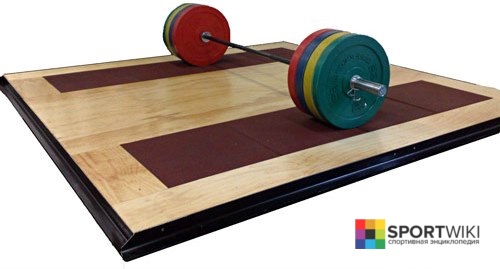
Weightlifting Equipment
Only the bars that meet the specifications of the International Weightlifting Federation are allowed for use during the competitions. Bars consist of the following parts:
Weightlifting bar
Weightlifting bar for men must meet the following conditions:
- weight — 20 kg;
- bar length — 2200 mm with an accuracy of 1 mm;
- bar diameter — 28 mm with an accuracy of 0.03 mm on the smooth part of the grip;
- the diameter of sleeves — 50 mm with an accuracy of 0.2 mm;
- distance between the internal locks — 1310 mm with an accuracy of 0.5 mm;
- width of internal locks, including the sleeves’ locks — 30 mm with an accuracy of 0.5 mm.
- the bar should have the notch in order to facilitate the grasp and the position of hands of the athlete;
- the male bar should have a blue color mark. In order to make it easier the notice the difference between a male’s and a female’s grips, the brass for female athletes should be marked with the yellow color.
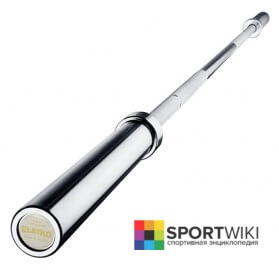
Weightlifting bar for women must meet the following conditions:
- weight — 15 kg;
- bar length — 2010 mm with an accuracy of 1 mm;
- bar diameter — 25 mm with an accuracy of 0.03 mm on the smooth part of the grip;
- the diameter of sleeves — 50 mm with an accuracy of 0.2 mm;
- distance between the internal locks — 1310 mm with an accuracy of 0.5 mm;
- width of internal locks, including the sleeves’ locks — 30 mm with an accuracy of 0.5 mm;
- the bar should have the notch in order to facilitate the grasp and the position of hands of the athlete.
Weight plates
Bumper plates should have the following colors and weight:
- 25 kg — red;
- 20 kg — blue;
- 15 kg — yellow;
- 10 kg — green;
- 5 kg — white;
- 2.5 kg — black;
- 1.25 kg — chrome;
- 0.25 kg — chrome.
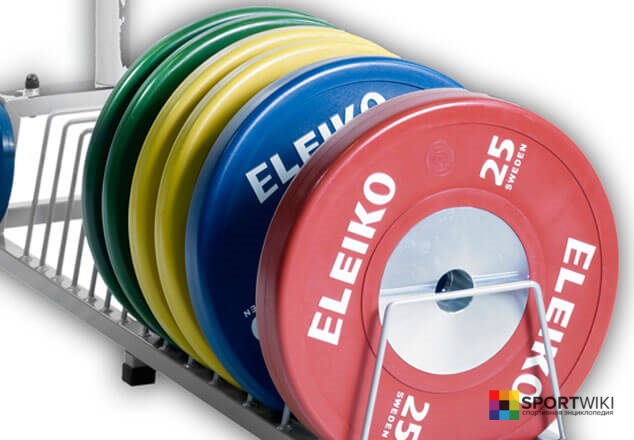
Locks
There must be two locks 2.5 kg each to secure the weightlifting plates on the bar.
Judging in Weightlifting
The panel of judges is completed by an organization that holds the competition and is approved by the relevant federation. The panel of judges includes:
- The meet chairman (head of a jury);
- Assistant referees;
- Chief scorer;
- Deputy Chief scorer;
- Doctor;
- The Supervisor.

